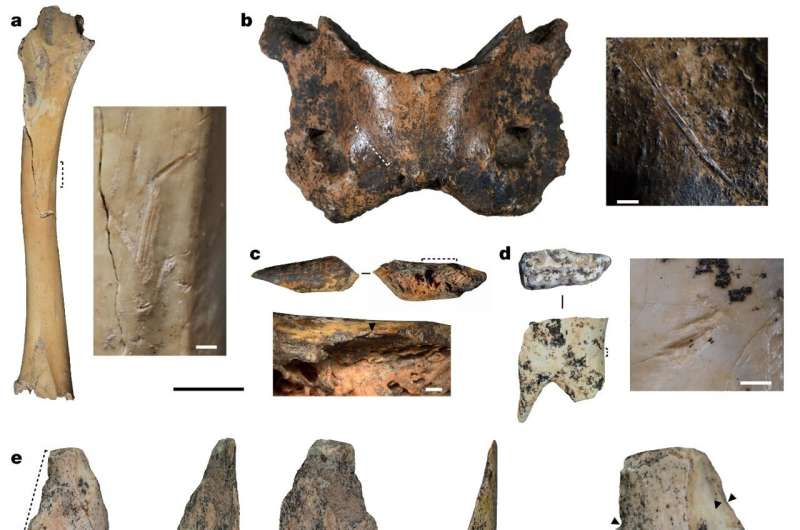This article has been reviewed according to Science X's editorial process and policies. Editors have highlighted the following attributes while ensuring the content's credibility:
fact-checked
peer-reviewed publication
trusted source
proofread
Bone remains indicate extinct humans survived on the Tibetan plateau for 160,000 years

Bone remains found in a Tibetan cave 3,280 m above sea level indicate an ancient group of humans survived here for many millennia, according to a new study published in Nature.
The Denisovans are an extinct species of ancient human that lived at the same time and in the same places as Neanderthals and Homo sapiens. Only a handful of Denisovan remains have ever been discovered by archaeologists. Little is known about the group, including when they became extinct, but evidence exists to suggest they interbred with both Neanderthals and Homo sapiens.
A research team led by Lanzhou University, China, the University of Copenhagen, Denmark, the Institute of Tibetan Plateau Research, CAS, China, and involving the University of Reading studied more than 2,500 bones from the Baishiya Karst Cave on the high-altitude Tibetan Plateau, one of the only two places where Denisovans are known to have lived.
Their new analysis has identified a new Denisovan fossil and shed light on the species' ability to survive in fluctuating climatic conditions—including the ice age—on the Tibetan plateau from around 200,000 to 40,000 years ago.
Dr. Geoff Smith, a zooarchaeologist at the University of Reading, is a co-author of the study. He said, "We were able to identify that Denisovans hunted, butchered and ate a range of animal species. Our study reveals new information about the behavior and adaptation of Denisovans both to high altitude conditions and shifting climates. We are only just beginning to understand the behavior of this extraordinary human species."
Dietary diversity
Bone remains from Baishya Karst Cave were broken into numerous fragments preventing identification. The team used a novel scientific method that exploits differences in bone collagen between animals to determine which species the bone remains came from.

Dr. Huan Xia, of Lanzhou University, said, "Zooarchaeology by Mass Spectrometry (ZooMS) allows us to extract valuable information from often overlooked bone fragments, providing deeper insight into human activities."
The research team determined that most of the bones were from blue sheep, known as the bharal, as well as wild yaks, equids, the extinct wooly rhino, and the spotted hyena. The researchers also identified bone fragments from small mammals, such as marmots, and birds.
Dr. Jian Wang, of Lanzhou University, said, "Current evidence suggests that it was Denisovans, not any other human groups, who occupied the cave and made efficient use of all the animal resources available to them throughout their occupation."
Detailed analysis of the fragmented bone surfaces shows the Denisovans removed meat and bone marrow from the bones, but also indicates the humans used them as raw material to produce tools.
A new Denisovan fossil
The scientists also identified one rib bone as belonging to a new Denisovan individual. The layer where the rib was found was dated to between 48,000 and 32,000 years ago, implying that this Denisovan individual lived at a time when modern humans were dispersing across the Eurasian continent. The results indicate that Denisovans lived through two cold periods, but also during a warmer interglacial period between the Middle and Late Pleistocene eras.
Dr. Frido Welker, of the University of Copenhagen, said, "Together, the fossil and molecular evidence indicates that Ganjia Basin, where Baishiya Karst Cave is located, provided a relatively stable environment for Denisovans, despite its high-altitude.
"The question now arises when and why these Denisovans on the Tibetan Plateau went extinct."
More information: Frido Welker, Middle and Late Pleistocene Denisovan subsistence at Baishiya Karst Cave, Nature (2024). DOI: 10.1038/s41586-024-07612-9. www.nature.com/articles/s41586-024-07612-9
Journal information: Nature
Provided by University of Reading




















